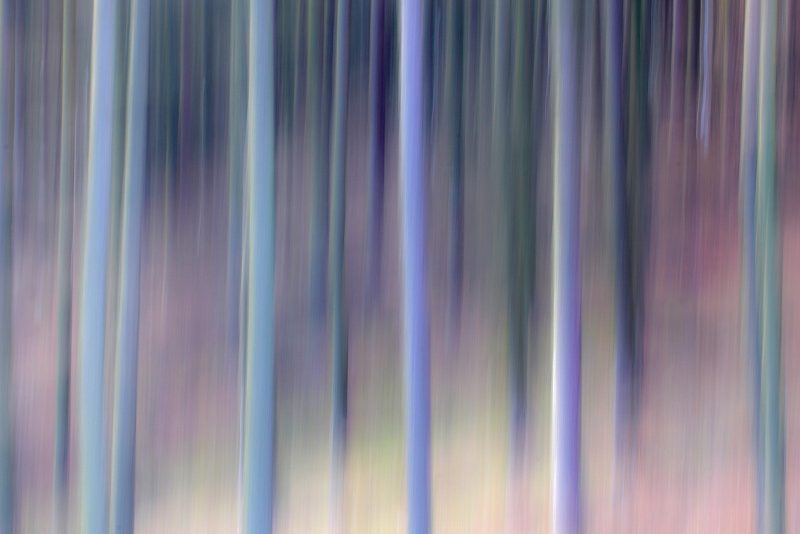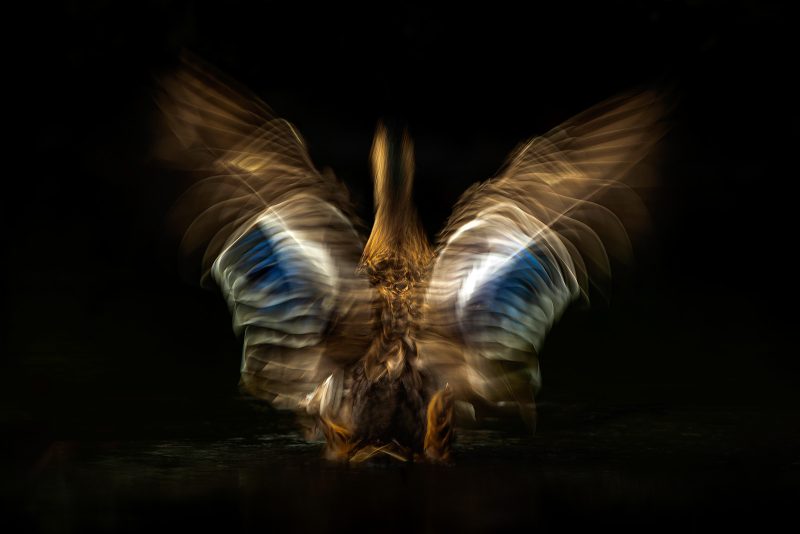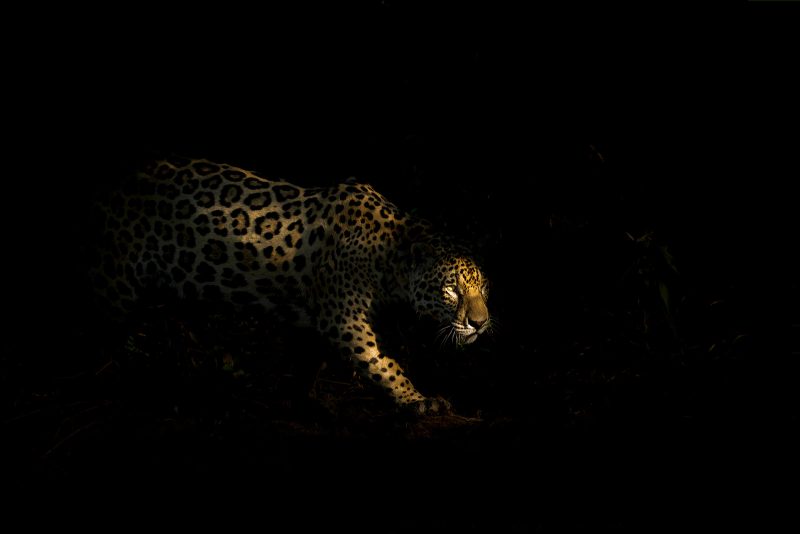How to Take Fine Art Nature Photographs

Since my photographic journey first began, I have always strived to carve out my own distinct style, and find a way to make my images stand out from the crowd. This is not an easy undertaking, especially in this day and age, when wildlife and nature photography has become so popular and, since the advent of digital technology, so accessible.
Whilst reading and learning about creative photography techniques is time well spent, fine art photography will always remain a subjective topic and, ultimately, it will be down to you as the photographer to forge your own path, and decide what type of images appeal to you.


Here are six ways in which I like to interpret any given subject.
1. Pre-visualisation
When it comes to any type of creative art, personal vision is hugely important. Before even heading out with your camera, you should try to create a clear picture in your mind of exactly how you would like your image to appear, and what you would like to convey.

By doing this, you will find it easier to choose a suitable subject and plan every aspect of your shoot. When visualising your image, think carefully about the sort of mood that you would like to evoke, the story you would like to tell, and, ultimately, how you will connect with the viewer.
Read more: Composition in Wildlife Photography – Getting Creative
2. ICM (intentional camera movement)
By purposely moving your camera during an exposure, a whole world of creative possibilities will open up. ICM can be used subtly, or more obviously, depending on both the length of the exposure, and the exaggeration of the movement.
Horizontal, vertical, and diagonal movement, and anything in-between, will all create a vastly different result. The possibilities are literally endless, with the only limitation being your imagination.
ICM is a great way to explore pattern, colour, and texture. Woodlands can provide plenty of opportunities. Moving the camera in a vertical direction while framing a section of trees can create a wonderfully abstract view of your environment. This technique demands patience, and you will need to experiment as much as possible.
Read more: How to Photograph Woodlands – Trees, Streams, and Fungi
Try a variety of shutter speeds, combined with different speeds of camera movement, to find the result that works most to your liking. Avoid overly bright days, as any highlights in the picture will result in white streaks that can distract the eye and complicate your compositions. As is so often the case, simplicity is key.
I often like to practice ICM during autumn when the colours are at their most vivid. Strong colours can play an integral part in any type of abstract image.
ICM can also work well for wildlife. Flocks of birds in flight against a stunning winter sky can evoke a strong feeling of energy. Choose a focal length that allows you to include as many birds as possible, and use both the movement of your subject and the camera to create images that tell the story of motion and journey.
Read more: What’s the Best Focal Length for Bird Photography?
3. The painting effect
I have always felt drawn to the kinds of images that closely resemble paintings. Camera or subject movement as described above can be a great way of capturing this, but weather can also play a part, particularly rain and snowfall.

When shooting in such conditions, one important creative tool you have at your finger tips is shutter speed. By experimenting with different length shutter speeds, you should find it possible to create a strong painterly effect.
Fast shutter speeds will freeze the snowflakes or raindrops, whilst slower shutter speeds of under 1/80th second will render them as long streaks. Deciding which way you would like your images to appear should be entirely up to you, but it is always beneficial to experiment and try a variety of different approaches.
If the opportunity allows, switch to shutter priority mode and dial in a variety of shutter speeds to see the effect that this has on the resulting images. You will soon learn to visualise the effect of shutter speed before even pressing the shutter.
4. Using colour
It is commonly thought that black and white are more closely associated with fine art photography, but colour can be used as a powerful tool that can conjure mood, atmosphere, and even emotion. During the brief period before sunrise and following sunset, light temperature cools down and blue hues become more dominant.
This is known as the “blue hour”. The human eye naturally compensates for this shift in colour temperature, but the camera’s sensor will record this cooler colour cast strongly, making this a fascinating time to explore fine art photography.

Pictures taken during the “blue hour” can possess a serene and ethereal quality, often evoking a dream-like mood. This is a great time to experiment with some of the other techniques already mentioned, such as ICM. Whilst cooler tones naturally convey a tranquil mood, warmer tones can be more uplifting.
Exploring your camera’s white balance settings can be an interesting way to enhance a particular mood, or even change a faithful representation for one which is entirely different, depending on what you would like to convey.
Whilst I believe this is best done in-camera by changing the white balance setting, it can also be done in post-processing by adjusting the colour temperature slider.
By deliberately mismatching white balance to create interesting and obvious colour shifts, it is possible to create fine art images with visual impact. Most RAW files will need some colour adjustment regardless, and I like to make a slight increase to vibrance and saturation to bring out the colours in any scene.
5. Shapes and textures
Shapes and textures can be found anywhere, sometimes in the most unlikely of places. I like to carry a macro lens around with me, just in case I come across any interesting details that could easily have been overlooked while searching for more obvious subjects.
The patterns created by lichen, moss, bark, and ice can all be explored with a macro lens and can create interesting images that are often ambiguous but visually arresting.
Composition and framing become paramount. Avoid overly busy compositions; instead, try to eliminate anything too distracting, and focus on capturing fine but exquisite detail that highlights colour, shape, and form. Repetitive patterns, geometric shapes, and interesting lines can all be used to great effect.
Avoid sunny days, as harsh light will bleach colour and the increase in contrast will inevitably result in a loss of detail. Overcast days, when the light is soft and even, will prove more effective, and will record colour and detail most faithfully.
When searching for details in nature, you rarely need to travel far. The movement of water and the reflection of trees can be fascinating subjects to explore, so I would recommend sticking to places nearby, perhaps your local park, and re-visiting it several times.
During each visit, try to look at your surroundings in a different light. It is amazing the amount of detail that can be missed when you are not searching for it!
6. Light and shadow
Light is a photographer’s chief resource, and perhaps the most powerful tool for any creative photographer. When the combination of light and shadow is used in a particular way, images that conjure a sense of drama, atmosphere, and mystery can be created.
I prefer to seek out these type of pictures during the golden hour. This is around one hour following dawn and one hour before dusk, when the light is warm and rich. The colour temperature is higher and the low angle of the sun is much more likely to create areas of deep shadow.
This is especially important, as these types of images will only work if there is enough contrast between the subject and the background. Your shooting position will also be paramount, so always keep a close eye on the background, and adjust your angle so that you have an area of shadow behind the subject.
With a little in-camera exposure adjustment, the results can be magical, sometimes evoking a mysterious and even sinister atmosphere. For the most dramatic results, you will need to dial in some negative exposure. I usually start with minus 1 stop and reduce exposure incrementally until the desired effect is achieved.
Sometimes up to 3 stops is needed, but it should always be up to you, the photographer, to determine the amount that most faithfully represents your creative vision. In these circumstances, backlighting your subject can work beautifully, and will result in a strong rim-light that highlights your subject’s shape and form.
When a large amount of negative exposure is used, you may find it possible to record only the rim light, set against a backdrop of solid black. This is a great way of reducing your image to its simplest form.
There are plenty of subjects that suit this technique, but mammals work particularly well, as the rim light will highlight the fine detail in the fur around the animal’s body. Birds in flight can also look spectacular when photographed contre-jour, as the light will burn through the wings, making them appear almost translucent.
Read more: Backlighting in Wildlife Photography – Creative Use of Light
In conclusion
Whatever techniques you decide to use, and however you decide to interpret your subject, always remember that fine art photography is deeply subjective.
Think about what it is that appeals to your artistic eye, and strive to capture the types of images that connect with you. By doing this, you are much more likely to put your passion into your work, and this will undoubtedly shine through in your images.














